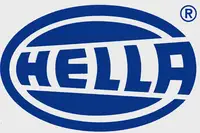Hella Supplies 2009 Opel with Traffic Sign Detection Camera
 |
- SEE ALSO: ALL HELLA ARTICLES
PLYMOUTH, Mich. OCtober 20, 2008: Hella KGaA Hueck & Co., a tier-one supplier of automotive lighting and electronic equipment, is providing General Motors’ European 2009 Opel Insignia with a camera system that reads traffic signs and warns of unintended lane departures.
One of Hella’s driver assistance systems, the optional camera is mounted at the base of the rearview mirror and is known as “Opel Eye.” It sounds an alarm if road safety lines are crossed, helping to improve safety, reduce traffic violations and save lives.
The revolutionary new traffic-safety system will be displayed by Hella for the first time in the United States at Convergence 2008, held October 20-22 at Detroit’s Cobo Center.
“Hella’s electronics specialists worked with GM engineers in Russelsheim, Germany, to develop the Opel Eye, which has a high-resolution camera with a wide-angle lens and processor,” said Dr. Martin Fischer, president of Hella’s Corporate Center U.S.A. “Opel Eye demonstrates Hella’s electronics prowess and is a forerunner of advanced safety technologies that soon will be appearing on cars in America.”
Hella’s traffic sign detection system reads speed-limit signs, no passing signs and other traffic restriction markers and displays a symbol on the vehicle’s dashboard. The system also saves sign images for short periods of time.
“For example, if you’ve ever missed a speed-limit sign for a road you’re on, this system can retrieve it with a push of a button,” Fischer noted.
About the size of a cell phone, the camera takes 30 photos per second. These images are filtered and evaluated by two signal processors and special software.
Signs are detected and read several times from a distance of about a football field. If a photo taken corresponds to a stored traffic sign, a warning signal lights up on the instrument panel.
Since the camera also detects construction-zone speed limits, it provides much more precise information than data stored in navigation systems. It also detects if there are special traffic conditions, such as different speed limits for different lanes.
The Opel Eye is paired with Hella’s Lane Departure Warning (LDW) system that helps drivers stay in a chosen lane on dual-lane roadways. LDW helps to combat dangerous phenomena such as microsleep or driver distraction which might cause a vehicle to unintentionally stray into oncoming traffic.
“When activated by the driver, Hella’s LDW system sounds a warning gong and flashes a light on the instrument panel,” Fischer said.
The LDW system works at speeds in excess of 30 miles per hour. The system’s signal processor filters pictures taken by a front camera, looking for lines and longitudinal structures to recognize traffic lanes. Thanks to special algorithms and by monitoring steering wheel movements, LDW only issues a warning in hazardous situations.
Hella KGaA Hueck & Co. develops and manufactures lighting and electronics components and systems for the automotive industry. Its joint venture companies also produce complete vehicle modules and air conditioning systems.
In addition, Hella has one of the largest aftermarket organizations in the world for automotive parts and accessories, with its own sales companies and partners in more than 100 countries. The consolidated annual turnover of the Hella Group is about $5.7 billion.
Hella is one of the top 50 automotive parts suppliers in the world and one of the 100 largest industrial companies in Germany. Nearly 25,000 people work in 70 manufacturing facilities and production subsidiaries throughout the world, including more than 3,500 research-and-development engineers and technicians. Customers include all of the world’s leading vehicle and systems manufacturers, as well as the automotive parts aftermarket.
Additional information is available at HELLA.


